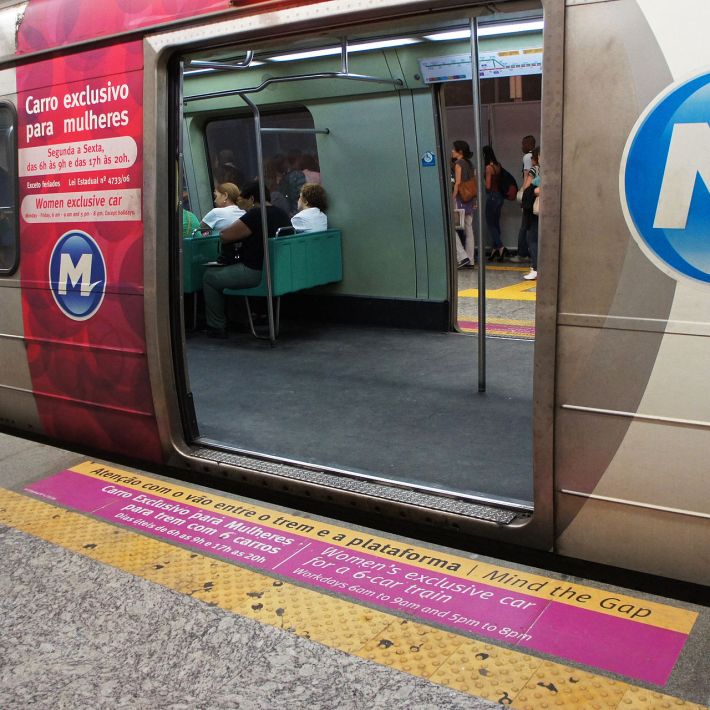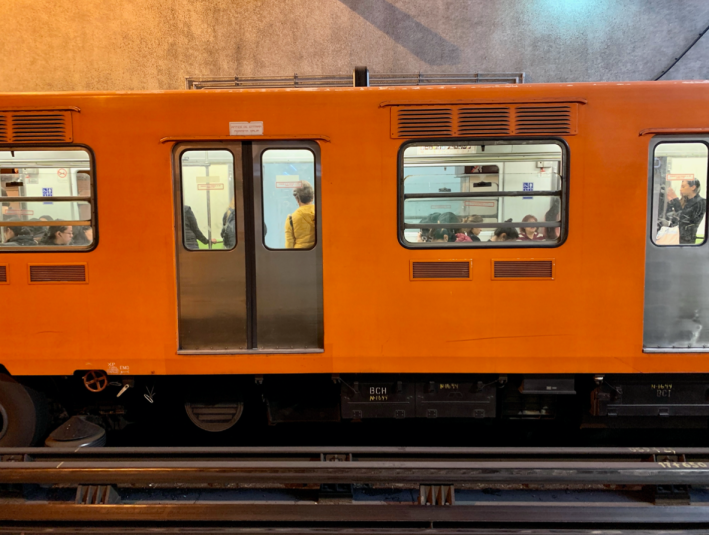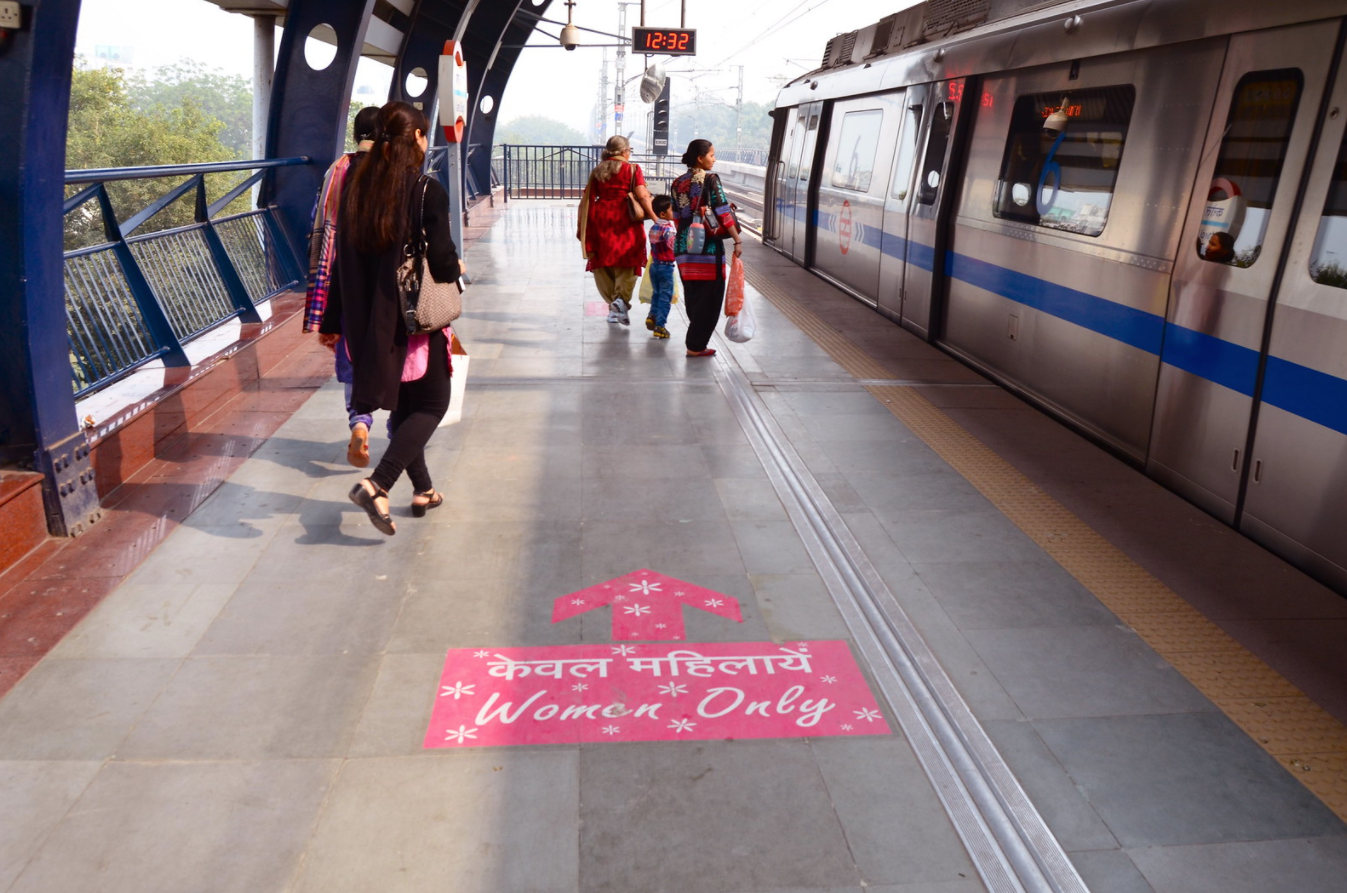After the publication of Olivia Grenzebach's article "Should the CTA adopt women-only transit? Interviews with Chicago women suggest yes" last Friday, we've gotten tons of feedback in the comments section and on social media. Many women expressed enthusiasm for the idea, noting that sexual harassment seems to be a nearly universal experience for female transit riders in Chicago.
But some people argued that the program would be impractical on the CTA, where important existing rules, such as the ban on smoking, are often ignored. Others asserted that the idea is paternalistic, and that it puts the onus on women to change their habits to accommodate men's problematic behavior, when we should instead be focusing on eradicating sexual harassment and assault. I wrote about women-only only transit for the Chicago Reader about five years ago, so I'd heard those arguments before.
One concern that didn't come up in the comments back then, but was a major theme this time around, is the belief that women-only transit is non-inclusive of, or makes life more difficult for, transgender and nonbinary people. I edited Friday's piece, so I should have made sure we addressed that issue. We also should have made it clear that if special train cars are going be a thing (and, again, many people strongly feel they shouldn't), they've got to explicitly accommodate all women, including trans women, as well other people, such as nonbinary individuals, who may also be at an increased risk of sexual harassment and assault due to their appearance.
As such, going forward Streetsblog Chicago will use the term "women, transgender, and nonbinary cars," or "WTN cars" when referring to the possibility of such such a program in Chicago, to make it clear we would only support such an initiative if it was gender-inclusive. We'll continue to use "women-only cars" when referring to existing gender-separated transit programs in other countries that may not explicitly accommodate transgender and nonbinary people.
In addition, we should have included more specific about how such a program would work, such as the fact that using the special car would be voluntary, and women and non-binary people traveling with men would use the other cars. As editor, I apologize for those oversights.
Olivia and I decided to run this follow-up post looking at some of the comments, addressing the concerns, and providing more info on how such a program might work in Chicago.
-- John Greenfield, editor
Many people have pushed back against and raised concerns about the idea of women, transgender, and nonbinary train cars (previously referred to on Streetsblog Chicago as "women-only cars") in our city in response Friday's article that suggested WTN transit as a possible effective solution to the violence and harassment women, including transgender women, and non-binary people often face on the CTA. Here, I hope to address the real, valid concerns and issues involved in Chicago (and the United States at large -- no U.S. cities have yet adopted women-only transit) and offer further clarity about what actual implementation could look like.
Let's divide the feedback into four main categories and look at some of the comments in each category. I will provide responses to these statements.
1. Yes, this would be really helpful for women, including transgender women, and other people who face increased risks of sexual harassment and assault due to being perceived as women.
"Anything to avoid being bothered when I'm listening to headphones, or having erect body parts exposed to me as well as groping, is worth it to me."
"Definitely, the first two cars on CTA trains should be designated [WTN]. It does harm to no one and it could do a lot of good."
[Response to a comment asking who would determine who is allowed to use the car] "You self-select. The same way people have been self-selecting into dressing rooms and washrooms forever. Very small chance a self-identifying male would self-select into a women's only space. Don't let perfection be the enemy of very good."
"I would love not to have to worry about maneuvering myself around the ways men take up space and privilege on the train."
[Posted by a man] "It's already being done in huge cities. I've seen it many times in Mexico City. In fact I've accidentally gotten on the women-and-children-only car. [It was] no big deal: People stared at me and I realized my mistake and switched cars as soon as I could."
"[In Brazil, where I live, women-only cars] aren’t obligatory. They’re there (and do include trans folk and nonbinary people!) as an option if you’d like to feel safer. It’s usually 1-2 cars only."
Response: Yes, WTN cars would have signage stating that transgender and nonbinary people are intended users of the facility, which would help promote a safe and welcoming environment for all vulnerable people on the car.

2. No, this would be impractical / expensive to implement.
"The between-car doors aren't locked (they're for emergencies) so guys would still use them to get on the [WTN] cars... And anyone who wants a seat would jump on, even if it was supposedly [WTN]-only."
"Why don't they actually get some employees or police to enforce the rules? I honestly can't remember the last time I rode on a northbound Red Line train that didn't have several people doing things that are expressly forbidden or illegal (smoking, playing loud music, begging for money, doing or dealing drugs, moving from train car to train car, etc.) It literally happens EVERY. SINGLE. TIME."
“Can anyone estimate the approximate additional fixed and operating cost for the CTA to have a women only car on an 'L' train?”
Response: New signage and platform barriers to designate the WTN cars, would likely not be that expensive, and that’s really all that would be needed to set up the new system.

3. No, this is sexist and paternalistic; We should address the underlying causes of sexual harassment and assault instead.
"As someone who lives in a country with women-only train cars [Japan], it doesn't solve the underlying problem... I've wondered if it causes more problems. Since, hey, if you don't want to be harassed, go sit in the women-only car."
"It's all about putting the burden of having an untroubled commute on the women, despite the fact that they should have an inalienable right to an untroubled commute just like the men. That kind of indemnification for the class of folks DOING the harassment infuriates me."
"How about we address the root of the problem and start holding people accountable for the s----y things they do on transit and in general so that women can enjoy the rights they fought for to be treated equally and not have to be in women's only sections like it's pre-World War II. This is just segregation and sexism and doesn't actually solve anything. People need to learn to live together."
"Women do not need to be penned up for their own ‘safety.' How backward and [paternalistic] is that?"
Response: Yes, WTN cars would be responding to a symptom of a much larger societal problem. In a more enlightened society, WTN people would not face harassment and violence on transit. But they currently do, and separate train cars could help. The CTA has tried other safety strategies -- including security cameras, anti-harassment public awareness campaigns, lighting, call-buttons -- which have not significantly improved safety for anyone, not just women.
Using the WTN section of the train would be entirely voluntary. The new cars would not limit WTN individuals' travel choices in any way; They would just offer an additional option. (Young children, say under 13, would be allowed on the special car with WTN adults; WTN people traveling with older males would use the regular cars.)
4. No, this is cisnormative, and would make life more difficult for transgender and nonbinary people
"Where do us nonbinary people go then? Literally the worst thing in [Mexico City] was that they had gender-segregated transit and I had no f---ing idea where to go. I sat in the women's section because I still looked femme at the time but like, if I'm riding with friends or partners I don't want to split up to gendered sides!"
"Queer people: 'Can we get some gender-free bathrooms?' Cis people: 'GENDER THE TRAIN CARS? GOT IT.'"
"My nonbinary ass hugging the coupling between the Woman Car and the Man Car with several rats as I transit my way to work in the rain."
"This is a fantastically dumb idea that will inevitably end with the cops beating the s--- out of a woman because they don't look feminine enough to be on the car."
Response: WTN people could choose to ride wherever they feel most comfortable. Ideally, police would not be involved in enforcing WTN transit, but rather it would be self-selecting.

I realize that WTN transit is a far-from-perfect solution. And as with all CTA rules, this policy would sometimes be ignored. But WTN 'L' cars could help many people feel safer and more comfortable while riding trains, and therefore encourage more use of public transportation.
I experienced women-only transit firsthand in Mexico City. The women-only sections of the Metro were clear and easy to board. Some high-traffic stops had metro employees present to enforce boarding, but for the most part the women-only cars were self-selecting and socially enforced. Occasionally a man would get on, accidentally or on purpose, and be stared at or spoken to and pressured to switch cars. The presence of many other women on the car ensured that even that rare breach wasn’t a threat. It was normal for women to use the regular cars as well. I felt free and unrestricted and unlimited in my mobility. It was comforting to know that a women-only space was available, even if I didn't always use it.





